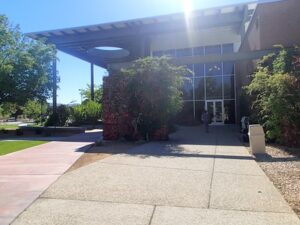Earlier this week, Ozarks Technical Community College announced that it plans to build a 100,000-square-foot student union building on its Springfield, MO campus. The building will contain a library, counseling and tutoring offices, a fitness center, a food court, study space, a bookstore, and a student plaza.
The $60M project was funded in part by private donations and a $46M appropriation by the State of Missouri. Groundbreaking has already taken place, and OTC expects to open the building in mid-2026.
OTC had an unduplicated student headcount of 14,600 and delivered about 227,000 credit hours of instruction. That’s a 6.25% drop in both enrollment and credit hour instruction from the previous year. According to data the US Census Bureau collected in 2023, more than 31% of households in Springfield, MO reported incomes of less than $35,000. The median income there is about $47,725, and the average income is $65,700.
OTC reports a graduation rate of 30% and an average income for its graduates of $36,000, which you may have noticed looks more like the maximum income of 31% of households there, and less like either the median or average income in Springfield.
So, it’s a little unusual to hear OTC’s chancellor, Dr. Hal Higdon, say that up to this point, new construction on OTC’s campus focused on classrooms, labs, and learning environments, but now, it’s time to focus on other student needs.
The new student union sounds like a very nice building. It’s being paid for primarily by the State of Missouri, and partially through private donations. Minimally, it appears as though the construction will not increase student costs by hitting them with the capital costs for the building. And it’s not diverting operating costs to debt service.
Operating a fitness center can divert educational dollars
I’m struck by two things, though. First, contrary to the Chancellor’s comments, it’s never time to shift the construction focus away from academics. That’s a dangerous path to go down, especially if it green-lights future non-academic projects.
Second, if the college didn’t have the money to build the building, how are they going to take care of it? Buildings like the one that’s described are expensive to build, and some components are expensive to operate. The food court and the fitness center come to mind. Operationally, these are expensive spaces. They absorb a lot of wear-and-tear, and age out faster than other buildings do. They’re very unforgiving about capital consumption and will require more frequent refreshes.
These are the questions that no one surfaces when the subject of campus construction arises. What are the annual operational costs for this building? How long will it last? What is the plan for food service in the building? What are the expected major maintenance costs and when will OTC encounter them?
If college and university boards asked more questions up front about the true costs of new construction on campus, especially in the context of falling enrollment, the institutions would have a better handle on the cost commitments they need to make to operate and maintain these buildings over time.
The OTC Chancellor expressed high hopes that the new building will attract more students. I think that focusing on creating high-wage programs would attract more students. After all, a college degree offers a student long term income potential. A fitness center does not.
Sometimes, it really is just that simple.
Photo Credit: 20 to 4 , via Flickr

















